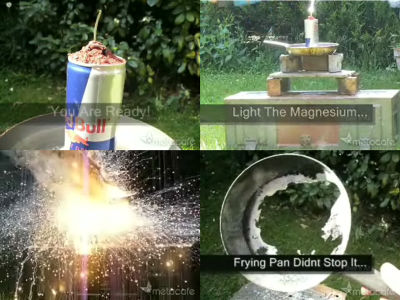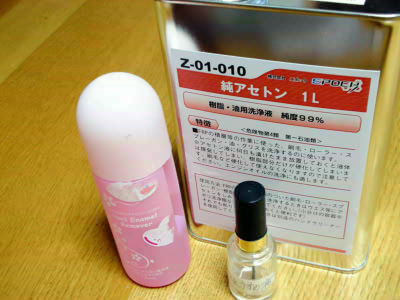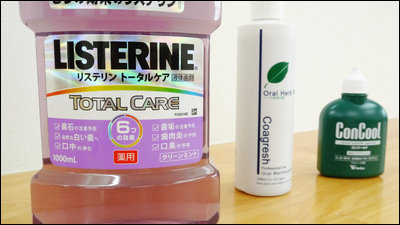Concrete method of "decontamination" to remove contamination by radioactive materials Summary
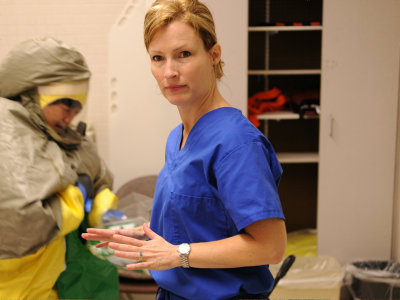
ByEuthman
"DecontaminationIs to remove contamination by radioactive substances, but I will explain the detailed practice method.
I compiled the guideline books for researchers dealing with radioactive materials with reference to what kind of treatment should actually be done and what type is appropriate when using detergent. There are treatments that seems to be quite difficult for the general public to do, but by knowing the specialized method that you took a step forward you can say "Decontamination" as a bite, but various measures of treatment are taken depending on the contaminated material You know that there is something, you should be prepared for emergency.
A concrete method of decontamination is summarized from the following.
◆ As soon as possible after decontamination to decontaminate in principle
If it is immediately after contamination, it is often possible to decontaminate easily by washing with water in general. However, as time passes after contamination, decontamination gradually becomes difficult. This is because contamination enters into fine cracks or wounds on the instrument surface or chemically reacts with the surface material. For such contaminants, decontaminants with high activity will be used. (For the decontamination agent, there are various types to be described later in further specific procedures below.)
◆ Do not spread the contaminated part (local limitation of contamination)
Do not use a large amount of decontamination agent or decontaminate even unnecessary parts without surely grasping the part of contamination and the area of contamination will be too wide. For example, if you contaminate the skin surface or the floor surface, use a decontaminant after wiping it off with cloth paper or cloth. Also, in order not to soak the pollution in the air, we will try to decompose as much as possible wet decontaminating (decontaminating without drying).
Also, as the decontamination agent and materials used become "radioactive waste", be careful not to disperse them in various places and take secondary damage and put them together in a predetermined container and throw them away.
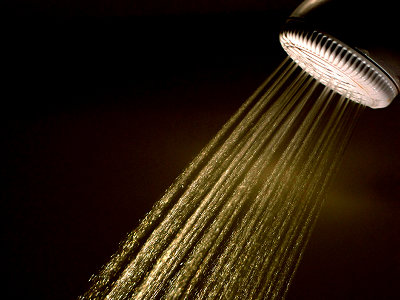
ByGfpeck
Decontamination of skin
Let's cut the nails short in advance so that radioactive substances do not get into the nails during decontamination. Parts such as folds, hair, nails, crotch part of fingers, outer edge of hands are difficult to decontaminate, so wash with carefully using a nail brush or hand brush. At this time it is desirable to use brushes made of animal hair instead of plastic.
When decontaminating the face, carefully do not allow contaminated water to enter the eyes and lips.
Do not use alkaline soap, apply a powder neutral detergent (soapless soap or sodium alkylbenzenesulfonate), wet with lukewarm water, rinse lightly in running water with a nail brush or the like. At this time, please do not use organic solvent as a decontaminant because it may permeate from the skin.
If the skin becomes rough due to decontamination, it is important to squeeze the hand cream etc. enough so as not to make a wound.
Apply a sufficient amount of titanium oxide paste (paste 100 g of anatase type titanium oxide with 60 ml of 0.1 mol / l HCl), let stand for 2 to 3 minutes, then scrape with a damp cloth and rinse thoroughly with water.
Powdery neutral detergent: After applying a mixture of 1: 2 ratio of chelate forming agent, moisten it with lukewarm water, then wash it with a nail brush etc while rinsing. There are various types of chelating agents, but Na-EDTA, Citric acid, sodium citrate, sodium tartrate, sodium phosphate are suitable.
Apply the same mixture of a saturated solution of KMnO 4 and a 0.1 mol / l H 2 SO 4 solution in the same amount, repeat the procedure of rubbing lightly with a nail brush or the like and rinsing with water three times. Then decolorize with 10% NaHSO 3. Make the mixture and work to dissolve NaHSO 3 in water just before using them. This method is strong on the skin, so it is not used for hair decontamination.
◆ Decontamination of mucous membranes and wounds such as eyes, nose, and lips
When the mucous membranes such as the eyes, nose, and lips are contaminated, immediately rinse with lukewarm water.
Contamination of the wound is also rinsed off with lukewarm water to decontaminate, but in order to prevent internal exposure, wash within 15 seconds from contamination. At this time, if it is not so much bleeding that worries about blood loss, it will press down the vicinity of the wound and prompt bleeding, and let out pollutants out of the body. Watch the state of the wound and scrub the wound with a soft nail brush if necessary and wash it.
If dust and grease etc adhere to the wound, we will give it immediately. For the allowance, use gauze firmly containing liquid detergent (0.5% solution of nonionic active agent) and rinse with warm water while gently rubbing the wound.
Also, when the wound is contaminated with a very dangerous nuclide, stop the vein within 15 seconds from contamination, rinse thoroughly with lukewarm water and tighten the wound with triangular cloth.
◆ Decontamination when swallowing radioactive substances or inhaling
If you swallow the radioactive substance, put your finger in your throat, spit out the stomach, then drink salt water and water.
When you inhale a radioactive substance strongly, repeat a series of actions such as repeatedly injecting the substance out of the body several times and gargling with water.
Decontamination of things

In general, decontamination of fibers and other substances, the floor of a room etc. is possible in the following way. However, it is extremely dangerous for ordinary people to handle things that exceed the contamination limit on the surface, so please discard if high figures from clothing or belongings come out at the inspection or if you are concerned about accurate decontamination .
Procedure 1: Wash with water or mild detergent.
Procedure 2: Using a chelating agent alone or a mixed solution of a chelating agent and a neutral detergent, washing it
Step 3: Wash with dilute mineral acid
From this point onwards it will be a detailed decontamination method depending on the material. Although there are few contents that can be executed immediately, it is useful to keep in mind that the coping method differs depending on the substance, when it comes to handling it or goes to the side to be treated.
◆ Fibers
· When contaminated with radioactive solution (radioactive material dissolved in water)
Temperature of a mixture of neutral detergent (1%) and chelate forming agent (0.1 mol / l) is 30 to 40 degrees, then washing for 15 minutes is repeated twice in total. Do not reuse the washing solution, please use a new solution each time. After that, repeat rinse with warm water for 10 minutes 2 to 3 times.
* Suitable chelate forming agents include EDTA (pH 10) and sodium hexametaphosphate (pH 3). Citric acid is also suitable for decontamination of silk and nylon.
※ Hydrochloric acid, oxalic acid is used for pH adjustment agent. Also, sodium carbonate is suitable for decontaminating cotton and rayon.
· When contaminated with radioactive insoluble matter (solid or powder)
While keeping the liquid temperature of the 1% neutral detergent at 40 ° C, it will be mixed in a washing machine for about 20 minutes, and the foam that is generated will overflow the open lid.
◆ Aluminum
Step 1: Wash with diluted neutral detergent and go directly to step 2 without drying as it is
Step 2: Wet surface with 10% citric acid and rinse with water with rubbing with a brush
Step 3: Wipe the surface with 10% nitric acid
Step 4: Immerse in a mixture of 5% NaOH, 1% sodium tartrate, and 1.5% H 2 O 2, then rinse thoroughly with water
◆ Brass, copper
Step 1: Wipe with acetone or alcohol on cloth
Step 2: Lightly scrape with sandpaper. When you can wet the surface, wash with 5% ammonium citrate with a brush and rinse with water, or use commercially available brass polish
Step 3: Repeat step 2
Step 4: Soak in a mixture of 2.5% sodium citrate and 0.2% neutral detergent (pH 7), then rinse thoroughly with water
Iron
Step 1: Wash with water or diluted neutral detergent
Step 2: Rinse with a mixture of 10% citric acid and 5% neutral detergent and rinse with water
Step 3: If you scrape the part that can not be decontaminated with 6 mol / l nitric acid, immediately rinse with water
◆ Stainless steel
Step 1: Wash with water or diluted neutral detergent
Step 2: Rinse with 30% nitric acid and rinse with water
Procedure 3: Wet surface with 10% oxalic acid, leave for about 15 minutes and rinse with water
Step 4: Fill 6 to 12 mol / l HCl quickly on the surface and rinse thoroughly with water
◆ Lead
Step 1: Wash with water or mild detergent
Step 2: Dip in 1 mol / l nitric acid and wash for 20 minutes
Step 3: Boil in 1 mol / l citric acid for 20 minutes
◆ Glass
· Great ones
Step 1: Wash with water or diluted neutral detergent
Step 2: Brushing with 4% Na-EDTA or 0.1 mol / l sodium hexametaphosphate
Step 3: Rub the surface with 2% ammonium fluoride or leave it in solution
· Small items
Step 1: Wash with water or rare neutral detergent
Step 2: Exposure to concentrated nitric acid or fuming nitric acid gas for several days
Step 3: Soak in 2% ammonium hydrogen fluoride for 30 minutes, then rinse with water
Step 4: Treat surface with chromic acid mixture
Porcelain
Step 1: Wash with water or diluted neutral detergent
Step 2: Boil in a saturated solution of ammonium carbonate for 20 minutes, then rinse with water
Step 3: Immerse in 5% ammonium hydrogen fluoride for 30 minutes, then rinse with water
◆ Paint painted surface
Step 1: Wash with water or diluted neutral detergent
Step 2: Sprinkle Na-EDTA + 2% neutral detergent, then wet with water and rinse with water
Step 3: Immersion in 5% ammonium citrate and rub with a brush
Step 4: If there is little contamination after decontamination, overcoat the paint, but if still high contamination is still confirmed, remove the paint
◆ Plastic
·acrylic resin
Same as glass decontamination method. However, concentrated nitric acid badly damages the surface.
· Resin other than acrylic resin
Same as for glass and stainless steel
◆ Rubber
Step 1: Wash with water or diluted neutral detergent
Step 2: Rinse with rubbing water with 5% Na - EDTA + 1% neutral detergent
Step 3: Rinse with 1% sodium citrate + 5% sodium hydroxide with scrubbing water
◆ Linoleum Other floor coverings
Step 1: Same as for paint
Step 2: It is better to avoid the use of organic solvent, but if it is inevitable, wipe it with cloth and CCl 4 or kerosene
◆ Tile
Step 1: Paint the surface in advance
Step 2: Wipe off with titanium oxide + Na-EDTA paste and wipe off
Step 3: The liquid decontamination agent is not very suitable, but if it is inevitable to use it, use 0.3% ammonium citrate, 4% Na - EDTA, 10% Na 3 PO 4 etc.
Step 4: Peel and replace tiles if possible
◆ Concrete, brick
Step 1: Sprinkle titanium oxide + Na-EDTA and wipe with a damp cloth
Step 2: Wet with 30% HCl, scrub and rinse with water. At this time, ventilate the working room firmly.
Step 3: Peel off with a tagger or paint it in.
◆ Wood
I cut off the part about 1 cm from the surface
For details on the decontamination described above, please refer to "Radiation safety management(P125 to P130) of the decontamination method is used from (Revised title 1st edition, first edition issued on March 25, 2008, latest edition as of March 2011).

Related Posts:
in Note, Posted by darkhorse_log

